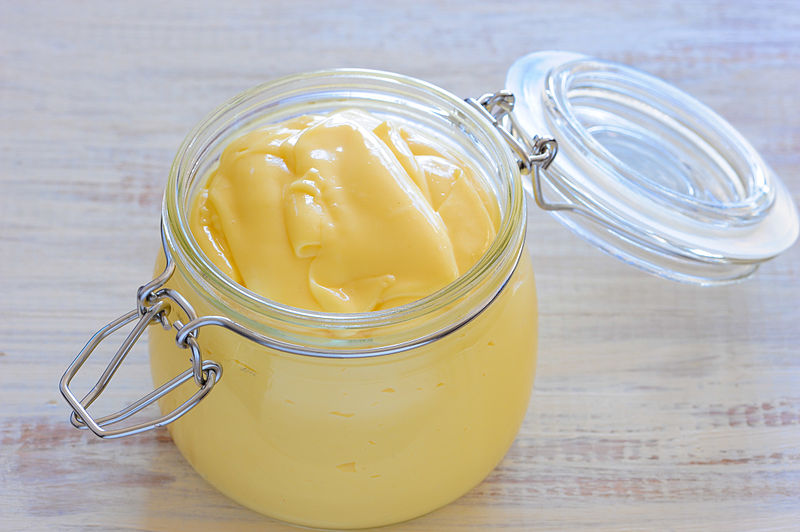Hello food fans today we are going to track down where
MAYONNAISE
Before the sauce called 'Mayonnaise' appeared in French cookbooks in the 18th century, several versions of similar sauces existed in Spain and in France.
In 1750, Francesc Roger Gomila, a Valencian friar, published a recipe for a sauce similar to mayonnaise in Art de la Cuina ("The Art of Cooking"). He calls the sauce "aioli bo". Earlier recipes of similar emulsified sauces, usually bearing garlic, appear in a number of Spanish recipe books, dating all the way back to the 14th century Llibre de Sent Soví, where it is called all-i-oli, literally "garlic and oil" in Catalan. This sauce had clearly spread throughout the Crown of Aragon, for Juan de Altamiras gives a recipe for it in his celebrated 1745 recipe book Nuevo Arte de Cocina ("New Art of Cooking").
On April 18, 1756, the Duke of Richelieu invaded Menorca and took the port of Mahon. A theory states that the "aioli bo" sauce was thereafter adopted by the cook of the Duke of Richelieu, who upon his return to France made the sauce famous in the French court.
At that point, the sauce became known as mahonnaise (indicating it was named after the city of Mahon). A number of legends arose relating how the Duke of Richelieu first tried the sauce, including his discovery of the sauce in a local inn of Mahon where he would have allegedly asked the innkeeper to make him some dinner during the siege of Mahon, and even that he invented it himself as a quick garnish.
However, other sauces similar to mayonnaise seem to have existed in France prior to the conquest of Mahon by Richelieu. In a book published in 1742, François Marin gives a recipe for a sauce that is close to the modern mayonnaise, and inspired by remoulade sauce, and by aioli.
Another version is Grimod de La Reynière's 1808 "bayonnaise" sauce which is a sort of aspic: "But if one wants to make from this cold chicken, a dish of distinction, one composes a bayonnaise, whose green jelly, of a good consistency, forms the most worthy ornament of poultry and fish salads." In fact, the earliest known French recipes of the sauce appear to be recipes for an aspic, not a sauce; Viard's 1806 recipe for "poulets en mayonnaise" describes a sauce involving a velouté, gelatin, vinegar, and an optional egg to thicken it, which gels like an aspic.
The word "mayonnaise" is attested in English in 1815.

Comments
Post a Comment